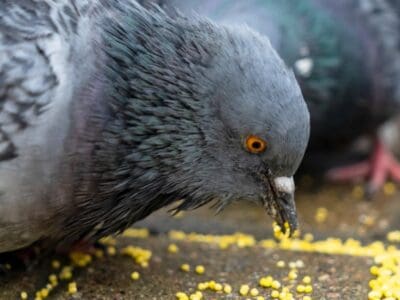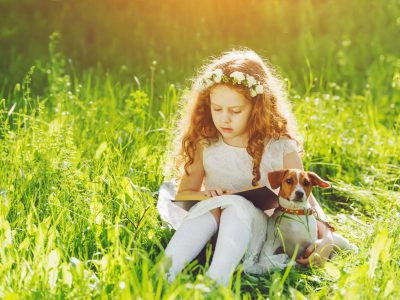Seymouria
Seymouria brolli
Although Seymouria had so many reptilian features, it was an amphibian
Advertisement
Seymouria Scientific Classification
- Kingdom
- Animalia
- Phylum
- Chordata
- Order
- Seymouriamorpha
- Family
- Seymouriidae
- Genus
- Seymouria
- Scientific Name
- Seymouria brolli
Read our Complete Guide to Classification of Animals.
Seymouria Conservation Status
Seymouria Facts
- Prey
- Smaller amphibians and insects
- Fun Fact
- Although Seymouria had so many reptilian features, it was an amphibian
- Estimated Population Size
- Both terrestial and aquatic habitats
- Biggest Threat
- Drought was a big threat to the Seymouria
- Most Distinctive Feature
- Seymouria had a deep, boxy, triangular skull
- Distinctive Feature
- Seymouria had a thick build with stocky limbs
- Habitat
- Both terrestial and aquatic habitats
- Diet
- Carnivore
- Favorite Food
- Smaller amphibians, insects
- Location
- North America, Europe
Seymouria Physical Characteristics
- Skin Type
- Skin
- Weight
- 2-3 lbs
- Length
- 24-32 inches
- Venomous
- No
- Aggression
- Low
View all of the Seymouria images!
Frogs, toads, and newts are the most popular amphibians today. However, when the first amphibians ventured out of the water, they looked remarkably different from their current forms. One of the earliest of them was the Seymouria, an extinct genus of the limbed vertebrate that lived in North America and Europe during the Early Permian Period. It was a terrestrial amphibian that usually returned to the water to breed, as many present-day amphibians do. However, Seymouria had so many reptilian features that for the first part of the twentieth century, they were thought to be primitive reptiles rather than amphibians.
Description and Size
Seymouria is an extinct genus of an amphibian tetrapod. They lived from about 251 to 299 million years ago during the Early Permian Period. The fossils of this ancient amphibian were first discovered in the town of Seymour, located in Baylor County in Texas. Its name means “from Seymour,” a reference to the town it was found.
For years, scientists had difficulty classifying this animal because it had both reptilian and amphibian features. The Seymouria were thickly built, with a large head, short neck, stocky limbs, and wide four-clawed feet. Their build suggested they were so well adapted to life on land that several scientists considered them primitive reptiles.
The terrestrial amphibian had a deep, boxy, triangular skull with an opening for its pineal eye. Its head was lower and longer. It had numerous teeth around its jaw margins and several within the palate. Its teeth were characterized by a tricky folded internal structure.
Seymouria was about 24 inches long (about 2 feet). As a whole, the seymourian body shape, seen from above, would have looked like that of many modern reptiles. The creature also had a strong backbone and muscles, which allowed it to move on land. While it adapted well on land, it often had to return to the water for breeding or spawning.
Male Seymouria had thicker skulls than females. The assumption is that the males used their thick heads for mating rituals. The skull difference automatically made the male heavier than the female. Generally, Seymouria weighed about 2-3 lbs. Scientists believe it was cold-blooded and had a tiny brain.
Diet — What Did Seymouria Eat?
The Seymouria was a carnivore. Its sharp teeth gave it a firm hold on prey while it swallowed them whole. It fed mainly on insects, smaller reptiles, and other smaller amphibians. Experts think Seymouria might have had a larval stage (like tadpoles of present-day amphibians). The larvae of this animal probably fed on insects and worms.
Another speculation about Seymouria’s diet was that it was probably a scavenger. The Seymouria could feed on the dead carcass of animals killed by other predators. They also preyed on eggs belonging to larger animals.
Habitat — When and Where It Lived
Seymouria lived during the Early Permian Period, about 251 million years ago. Fossils of this amphibian have been found in North America and Europe, which suggests that they lived predominantly on these continents.
The Seymouria was usually born in the aquatic world and would spend its early life as a marine animal. Their eggs hatched in water and grew there as well, feeding on worms and insects until they were old enough to come to the surface for oxygen.
As an adult, the organism spent more time on land. However, the North American climate during the Permian Period was slightly parched. Since the creature had dry, scaly skin, it would often go back to the waters to cool off.
Seymouria — Threats and Predators
While the Seymouria cannot be called a top predator, it was a predator to much smaller amphibians and insects. It was, however, considered prey to larger land animals like Dimetrodon, which weighed well over 250 kg and was 3.5 feet long. It could only outmaneuver this creature through its speed.
Drought was a major existential threat to Seymouria because, without water, it was unable to reproduce.
Discoveries and Fossils — Where It Was Found
The first Seymouria fossils found in 1882 in the Baylor County, Texas area. A collection of of bones belonging to a group of individuals was located by C.H Stenberg. In 1939, T. E white rediscovered them and explored for more fossils until he finally found them in Texas.
Dave Berman discovered the Seymouria sanjuanensis in San Juan County, Utah. Peter Vaughn named it after its discovery location. Five additional discoveries were also made over the years. Well-preserved fossils have also been found in Germany.
Although they were first discovered in 1882, It was not until 1904 that they were named and described by Ferdinand Broilli. By 1928, scientists held divergent views on whether the organism was a reptile or an amphibian. In the 1940s’, they were classified as reptiles until a fossil was found with gill impressions. Scientists concluded that Seymouria was a vital link that could provide insights into the transition between amphibians and reptiles.
Extinction — When Did It Die Out?
Seymouria, like many other organisms during the Paleozoic era, were obliterated during the Permian-Triassic extinction that killed off a large percentage of terrestrial and marine species. Unfavorable atmospheric conditions and oceanic acidification were contributing factors that triggered the widespread extinction.
Similar Animals to the Seymouria
Similar animals to the Seymouria Include:
- Discosauriscus: This seymouriamorph also existed around Western and Central Europe during the Early Permian period. Like the Seymouria, it had wide jaws, sharp teeth, and a long komodo-like tail. It was also both a terrestrial and a marine animal.
- Kotlassia: Kotlassia was a genus of seymouriamorph amphibians that lived in Russia during the Permian period.
- Diadectes: This is a genus of early terrestrial plant-eating animals that may have evolved from the Seymouriamorph amphibians. Members of this group have been found in Lower Permian and Carboniferous fossils from North America.
Related Animals
View all 293 animals that start with SSeymouria FAQs (Frequently Asked Questions)
When was Seymouria alive?
Seymouria lived during the Early Permian Period, about 251 million years ago. It was initially thought to be a primitive reptile but was later discovered to be an early amphibian.
How big was Seymouria?
Seymouria was about 24-32 inches long and weighed 2-3 pounds. They walked on all fours and are similar in appearance to present-day reptiles.
Where did Seymouria live?
Seymouria has been found in rock deposits in Seymour, TX, and other parts of North America. Fossils of this genus have also been found in various locations in Europe.
Thank you for reading! Have some feedback for us? Contact the AZ Animals editorial team.
Sources
- Wikipedia, Available here: https://simple.m.wikipedia.org/wiki/Seymouria
- Brittanica, Available here: https://www.britannica.com/animal/Seymouria
- DBpedia, Available here: https://dbpedia.org/page/Seymouria

















